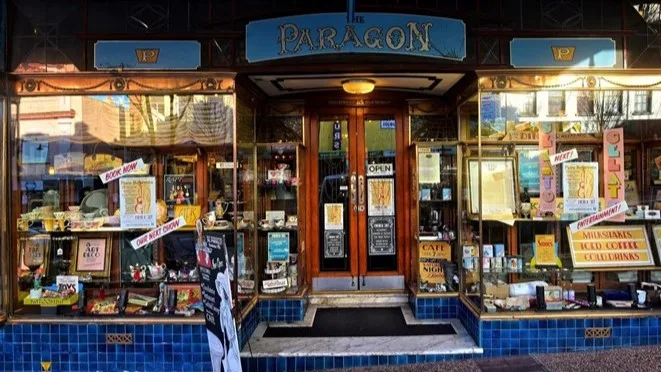By George Vardas
When the first explorers crossed the Blue Mountains in 1813 they were struck by the wonderfully brilliant blue of the distant hills. Just over a century later, a young Greek migrant from the island of Kythera, part of the Ionian Island group where the English writer Lawrence Durrell famously wrote “that the blue really begins”, arrived in Katoomba and went on to establish a café and confectionery business that still stands today: the Paragon Café.
Zacharias Theodore (Jack) Simos was born on 15 August 1897 in the village of Kousounari, Kythera. Zacharias migrated to Sydney with several other Kytherian young men arriving in Sydney aboard the RMS Omrah in 1912. He proceeded to find work in various Greek cafés in Sydney and at Tenterfield, before setting up a business at Windsor, selling fruit and vegetables door-to-door.
In 1916, after having saved enough money, Jack arrived in Katoomba and leased a small shop in Katoomba Street, near the Carrington Hotel, which he named the Paragon Café and Oyster Palace, adapting the word “paragon” for a model of excellence.
Rise of the Paragon
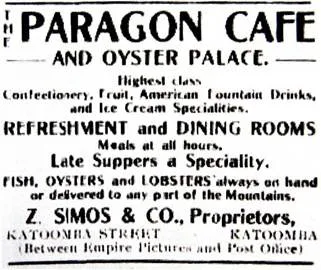
Jack had dreams of turning the Paragon into a high-class refreshment room and was able to pursue this goal after purchasing the shop in 1921. In that year he was joined by his brother, George Simos, who went on to be lauded as a master chocolate confectioner.
The Paragon also began advertising itself as a ‘Sundae and Candy Shop’ to take advantage of the growing ‘Americanisation’ trend in Australian food. By 1926, it was trading as Simos Bros.

In 1922, an article appeared in the Blue Mountain Echo (assumed to have been authored by Jack himself) which portrayed the Paragon as the “acme of good taste and modern ideas presented by an enterprising proprietary that believes in nothing but the best”.
In 1925, Jack engaged an architect and a firm of renown shopfitters to convert the interior of the café premises into an Art Deco-themed establishment, complete with a soda fountain made from the finest Moruya marble, and booths of Queensland maple and dark timber-panelled walls.
In 1929, Jack travelled to Europe to study the latest trends in the production of confectionery as well as presentation and packaging ideas. On his arrival in Kythera he met and became engaged to Maria Panaretos, the American-born daughter of café proprietors. Mary (as she came to be known) and Jack together returned to Australia in 1930 and to the Paragon café.

A history of elegance and enterprise
Upon their return, they embarked upon two large extensions at the rear of the café to broaden its appeal amongst locals and visitors alike with the provision of private function rooms.
In 1934, the Banquet Hall was added with its distinctive pre-Columbian American perforated plaster friezework. It was followed by the Blue Room in 1936 which was inspired by the ‘modern ocean liner’ style, with mirrored walls, mood lighting and a sprung dance floor. Both were designed by the architect Henry Eli White (who had also designed the Capitol Theatre and later the State Theatre in Sydney in the late-1920s).
Inter-war Art Deco with its vivid decorative styles was particularly popular with milk bars and cinemas during the 1930s and in the Paragon there was an eclectic architectural panoply of Art Deco moderne, pre-Columbian and the functional ocean liner influences at play with their adherence to clean geometry, sweeping lines, decorative motifs, and floral and geometric patterns.
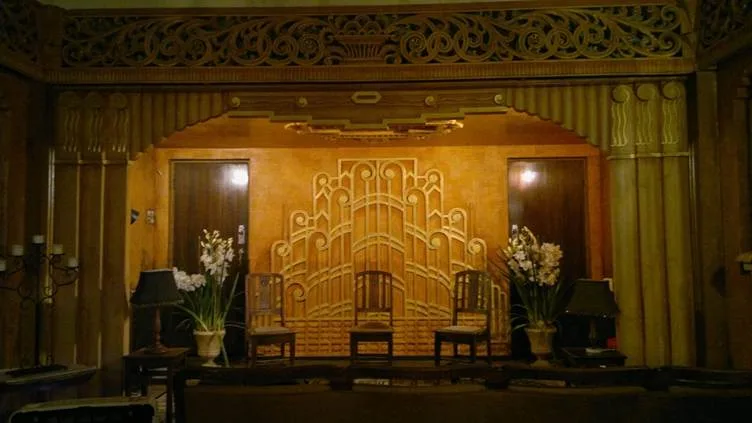
To add a distinctly Hellenic touch to this assemblage, after the war Jack commissioned a Dutch artist Otto Steen to create a series of bas-relief sculptures in alabaster depicting Greek deities, nymphs and goddesses and set against the dark timber panelling above the seating booths of the café. They depicted scenes from Greek mythology, including the judgment of Paris among the three jealous goddesses, a voluptuous Venus with her son Cupid, Pan with his pipes, the flight of Icarus and others.
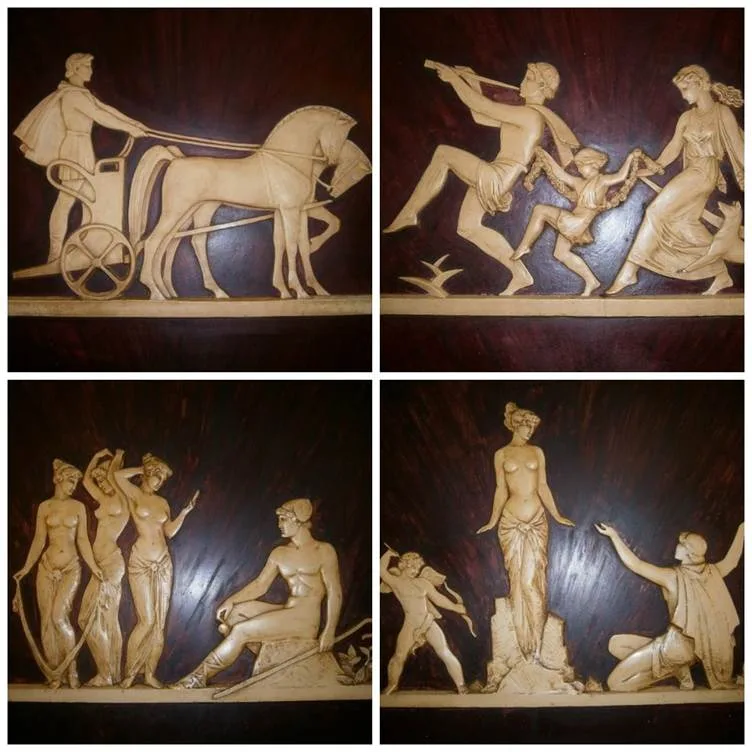
The Paragon’s reputation spread far and wide. Its hand-made ice-creams and sundaes blended with syrups and fruit ingredients were popular, as were the bread, cakes and pastries manufactured on the premises. But it was to become famous for its chocolates and other confectioneries sold in exquisitely designed and coloured boxes. The popular Katoomba landmark Orphan Rock became the café’s distinctive trademark as it aspired to ‘stand-alone’ excellence.


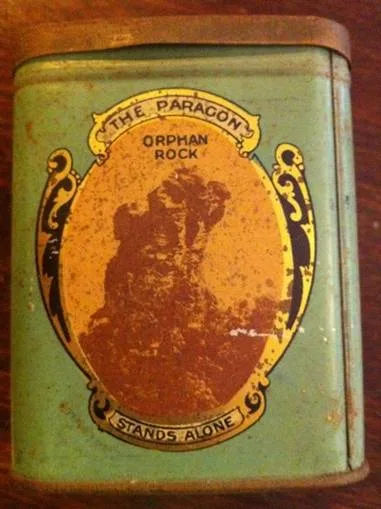
The bakehouse and the chocolaterie which gave The Paragon its name were located upstairs from the mid- 1920s, together with the large refrigeration plant for the ice-cream made on the premises.
Gradually the Paragon started to cater to more adult tastes and it would later be described as one of the smartest cocktail bars in the Art Deco style in Australia. Café chairs even carried the “P” motif as branding and marketing figured large in the Simos’ promotion of the café.
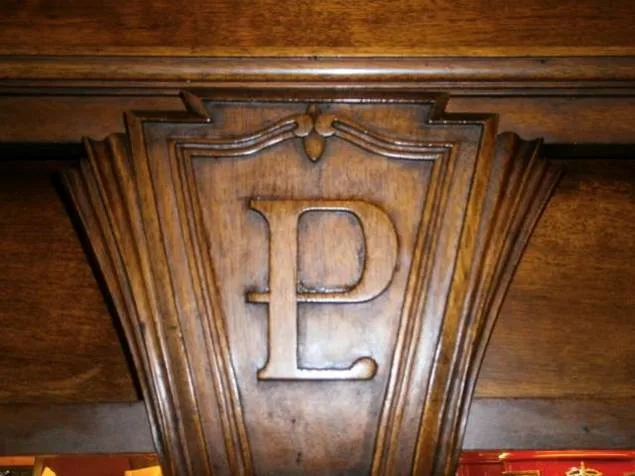
Heritage significance: A cultural icon
The Paragon was first listed by the National Trust of NSW in 1975.
In 2015, it was listed as a heritage item on the NSW State Heritage Inventory because of its “state significance”, reflecting the flair and taste of a Greek immigrant family with a wide experience in catering and the need for a high class tea room, sundae parlour, confectionery and ballroom in the inter-war Katoomba for locals and visitors.
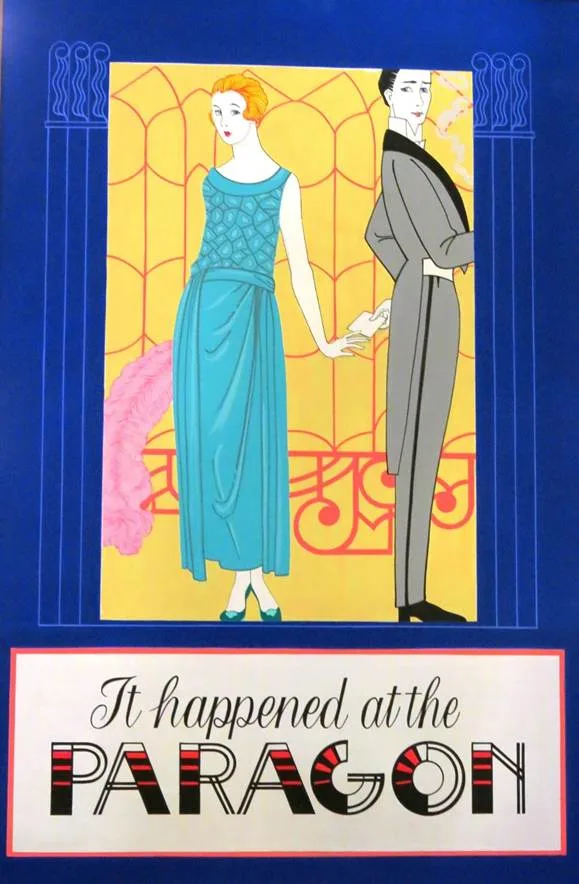
It was acknowledged that the Paragon provided refreshment facilities for visitors who had come to view other attractions like the “Three Sisters” and “Echo Point,” as well as being a destination in its own right. It personified how Greek cafés throughout NSW and Queensland in particular reflected an “evolutionary amalgam” of the original Greek coffee house (or kafenion) and the American-inspired oyster saloon and soda parlour.
However, the primary heritage significance of The Paragon Restaurant derives from its internal decorative finishes, use as a café, association with Jack and his family, and artists and shopfitters Otto Steen, Henry White and H & E Sidgreaves.
Jack died on 15 November 1976. His wife Mary continued as manager of the Paragon until 1987 and endeared herself to her customers and visitors for her charm and warmth. The cafe was eventually sold in 2000. Mary died on 15 May 2001 and was buried beside her husband.
Heritage at risk
The Paragon Café changed hands several times until in 2011 the business was sold to Robyn Parker and continued to operate as a functioning café and chocolate confectionary store.
However, the business sadly closed in 2018 and the iconic landmark in Katoomba fell silent after a falling out between the tenant and the building’s owner, Conset Investments Pty Ltd (a company controlled by the well-known Sydney solicitor John Landerer) which had purchased the property in 2006.
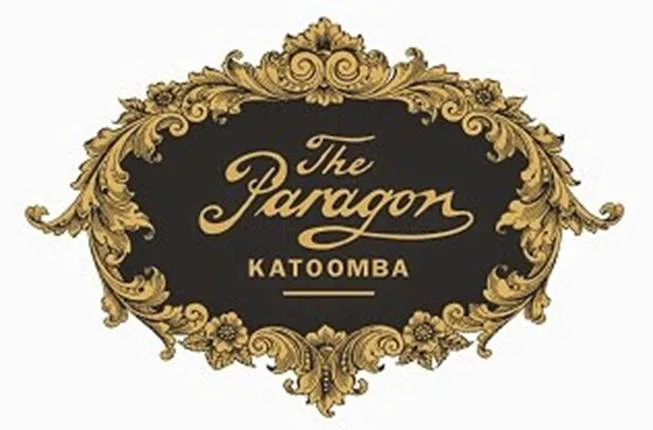
In September 2018, in a contested trademark application over the ownership of the name “The Paragon,” Landerer stated in evidence that the Paragon was “currently vacated for refurbishment works” and that it was the landlord’s intention to “reopen the Paragon Restaurant and chocolate shop with new tenants once the refurbishment works are completed”.
In 2019, Conset Investments lodged a comprehensive development application with Blue Mountains City Council to obtain approval for conservation and remediation works to the building. The application was supported by a detailed heritage impact statement and conservation strategy prepared by a prominent firm of heritage consultants, NBRS Architecture (Heritage), as well as engineering and other expert reports setting out the nature and extent of the proposed works.
The heritage report revealed that recent inspections of the Paragon and its roof had confirmed damage to internal decorative finishes caused by water ingress and localised rising damp and falling damp.
The report stated that the owner “intends to carry out general maintenance and repair of decorative finishes to facilitate the leasing of the premises and to continue using the spaces as The Paragon Café”.
The proposed works included the repair of existing roof finishes; the repair of timber floors and timber floor sub-structure; installation of additional mechanical sub-floor ventilation and sub-floor vents; conservation of internal decorative finishes located in the ground floor level public spaces, including the reconstruction of nine timber panels in one of the dining halls to match existing adjacent panels.
The conservation management strategy proposed that the original room layouts of the ground floor dining rooms were to be retained within The Paragon Restaurant (63-67 Katoomba Street) with all identified significant built elements assessed as having high significance to be retained and conserved and, where necessary, to be restored.
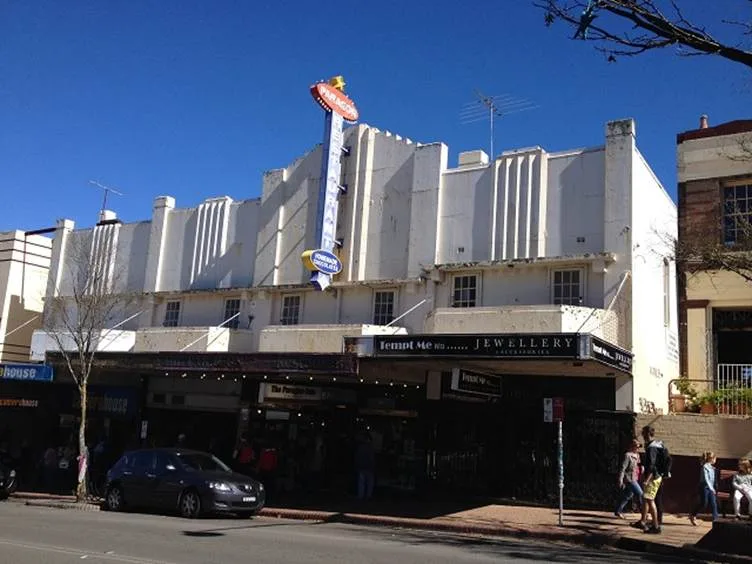
In particular, it was noted that The Paragon Restaurant/Café includes significant decorative finishes that should be conserved in a manner that recognises their heritage significance whilst the significant internal spaces (Dining Rooms 1, 2, 3) of the Paragon Restaurant should be conserved and any future development should ensure the spatial characteristics are retained. Any future division of these spaces should retain or interpret the significant original spatial characteristics and original fabric of the building.
The engineering report by Northrop Engineers confirmed the troubling extent of the deterioration throughout the structure and fabric of the heritage listed Art Deco café and restaurant, including extensive timber decay to panelling and flooring, brickwork mortar failings, roof leaking and moisture penetrating through the brick walls and façade.
The engineers concluded that the current ground floor timber floor framing was structurally inadequate for its purpose and imposed a risk to safety if not rectified and they recommended that the ground floor timber framing had to be fully removed and either rectified or replaced due to its unsafe condition and structural inadequacy.
On 30 June 2020, development consent was finally issued by the Council after an extensive review and public consultation.
Heritage destruction by neglect?
Initial enthusiasm that the issue of development consent and the prospect that serious repair and conservation works would be undertaken to this iconic building gradually descended into concern and doubts over whether any real action would be taken.
In May 2022, a journalist from the Australian, Graham Erbacher wrote an article titled “Is our precious heritage being served?” and addressed concerns over the fate of the Paragon. He noted that in the Paragon’s beautiful, glazed shopfront there was a notice:
“The Paragon is currently closed for conservation work to address the toll wrought by time and the mountain climate, but will reopen in 2019, refreshed to another century.”
And another Public Notice declared the NSW Office of Environment and Heritage (which the author noted has not existed since 2019) had permitted “preliminary investigations into the structural drainage and damage issues into The Paragon… Serious failure in the floors and drainage especially are being addressed”.
In May 2023, the Newsletter of the Blue Mountains Branch National Trust NSW featured an article about heritage buildings being destroyed or irreparably damaged by neglect. It cited the case of the Paragon complex in Katoomba, which by that stage had been closed for five years, noting that the property needed some remedial attention to restore the toll of a century of public patronage and damage from water ingress.
The Sydney Morning Herald in an article on 28 August 2023 reported that the NSW Heritage Minister, Penny Sharpe, was going to ask the Heritage Council of NSW to prevent Katoomba’s much-loved Paragon Cafe from perishing because of neglect.

This followed a meeting of a non-for-profit organisation known as the Friends of the Paragon and the Member for the Blue Mountains, Trish Doyle MP, on August 16 2023, to discuss the group’s concerns after the group had launched a public petition calling for action as the Paragon’s future “hangs in the air”.
Also present at the meeting was Rod Stowe, the Chair of the Blue Mountains Branch of the National Trust (and formerly the NSW Fair Trading Commissioner), who told The Greek Herald:
“It is tragic that the future of this Blue Mountain’s icon is now at serious risk. Accordingly, the National Trust strongly supports the sentiment expressed in the petition being presented by the Friends of the Paragon seeking the intervention of the Minister for Heritage to ensure that essential maintenance and conservation work is undertaken at the property as soon as possible … (to) … ensure the owner, lawyer John Landerer, fulfils his obligations under the Heritage Act.”
In the report by the Sydney Morning Herald, Mr Landerer was quoted as saying that he was more concerned about the condition of the cafe than anyone else but stressed there was no delay, and said work was expected to start “this year” (ie 2023).
The Heritage Council of NSW in fact met on 4 October 2023. According to the minutes of that meeting, the Council noted recent correspondence regarding The Paragon Café, Katoomba and discussed the potential for compliance and enforcement actions to be taken if necessary to ensure the substantial conservation, maintenance and repair works are completed.
The authority, according to the minutes of its 5 March 2024 meeting, subsequently conducted a “compliance inspection” at the Paragon.
Things came to a head earlier this year when photos appeared on social media of vandalism and damage to the building, including graffiti, broken fittings and significant water damage inside the property, and the ensuing public outcry over the building’s deteriorated condition.
A number of photos taken by concerned locals have magnified those concerns, none more so than the current state of what was one of the main dining rooms in the Paragon.
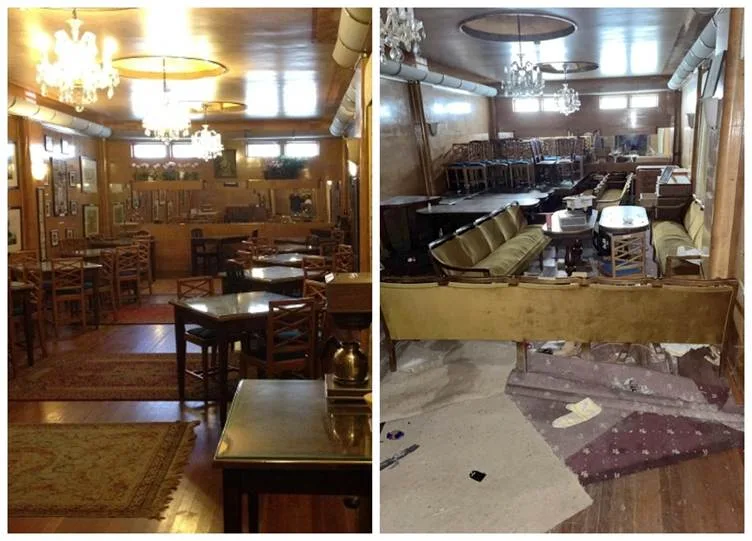
Photos of the deteriorated condition of the bar also tell a sorry tale of neglect. Ironically, the bas relief that can be seen above the bar depicts the legendary flight of Icarus with wings designed by his father Daedalus and made of wax, feathers and string.
We all know what happened: Icarus flew too close to the sun, his wings melted and Icarus fell into the sea and drowned.
A metaphor for the unfortunate descent of the Paragon, perhaps?

Heritage NSW intervenes
On 2 May 2025, Heritage NSW issued a formal Notice of Intention to make a compliance order under section 120A of the Heritage Act, directing the property owner to take urgent measures to secure the building and prevent further deterioration. The order required the Paragon Café to be secured within 14 days and a detailed heritage report to be submitted within two months.
It was subsequently reported that Heritage NSW inspected the former Paragon Café in Katoomba on 2 June with the owner’s building manager and that further work had been undertaken to make the property safe from trespassing and ongoing vandalism.
The spokesperson added that Heritage NSW would continue to work closely with the owner, Blue Mountains City Council and the Heritage Council of NSW.
In a statement to The Greek Herald, NSW Environment Minister Penny Sharpe said:
“The Paragon Café is an incredibly important historical site and protected on the State Heritage Register. The failure to protect this item has been devastating for those who have been hoping to see the building restored to its former glory.”
Mr Landerer has previously stated that efforts to restore the building have been delayed due to difficulties finding skilled tradespeople for the specialised work.
In an interview on ABC Radio, Rod Stowe was rather dismissive of this claim, stating that “it does not really cut the ice” given the many reputable conservation building companies in the state.
The Paragon Café is now boarded up with signs declaring that it is now “under Restoration”.
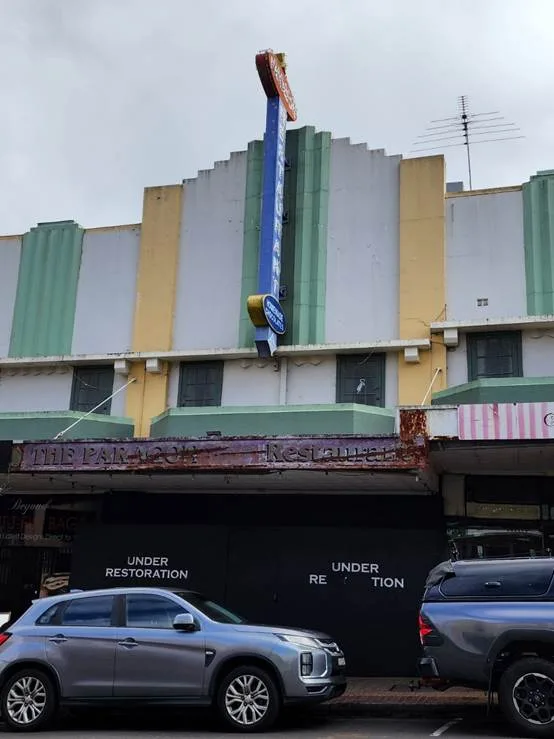
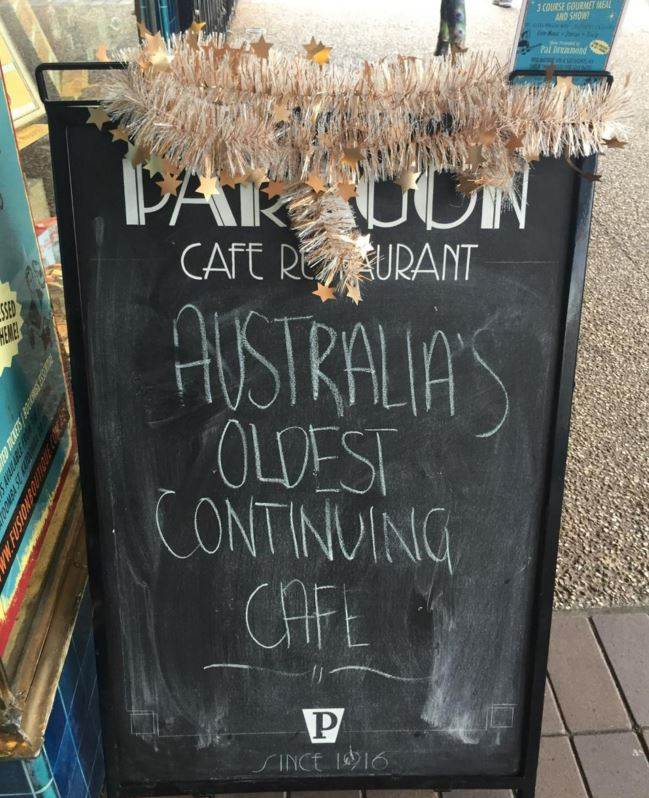
The future of the Paragon
The restoration of the Paragon Cafe represents a significant step towards preserving this iconic cultural heritage site.
The immediate challenge is ensuring that the restoration works are carried out to the highest standards of conservation practice with meticulous attention to detail and respect for the building’s original fabric and architectural grandeur.
The Paragon Cafe will once again stand alone.
*George Vardas is a cultural heritage consultant and is also a past President of the Kytherian Association of Australia.
